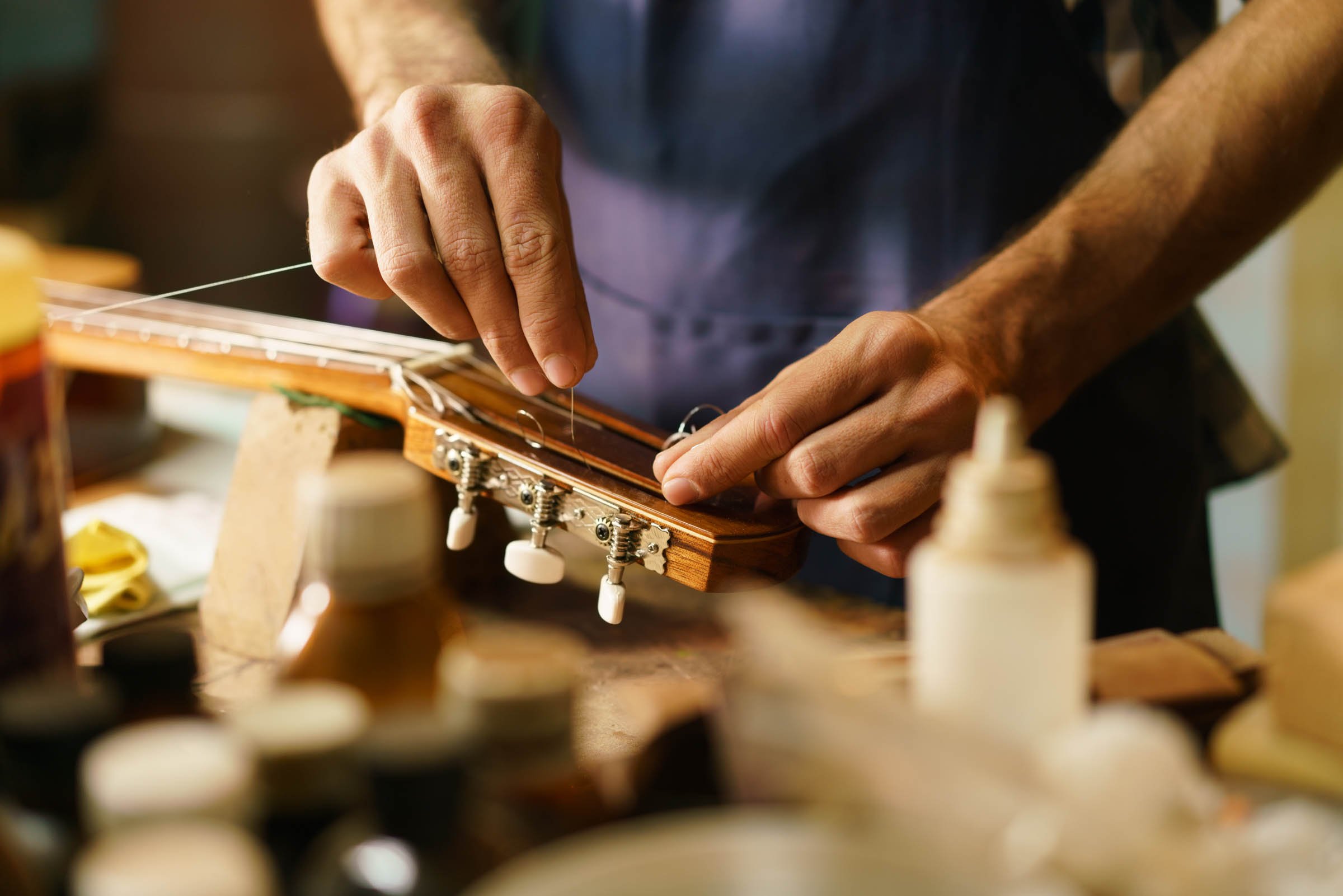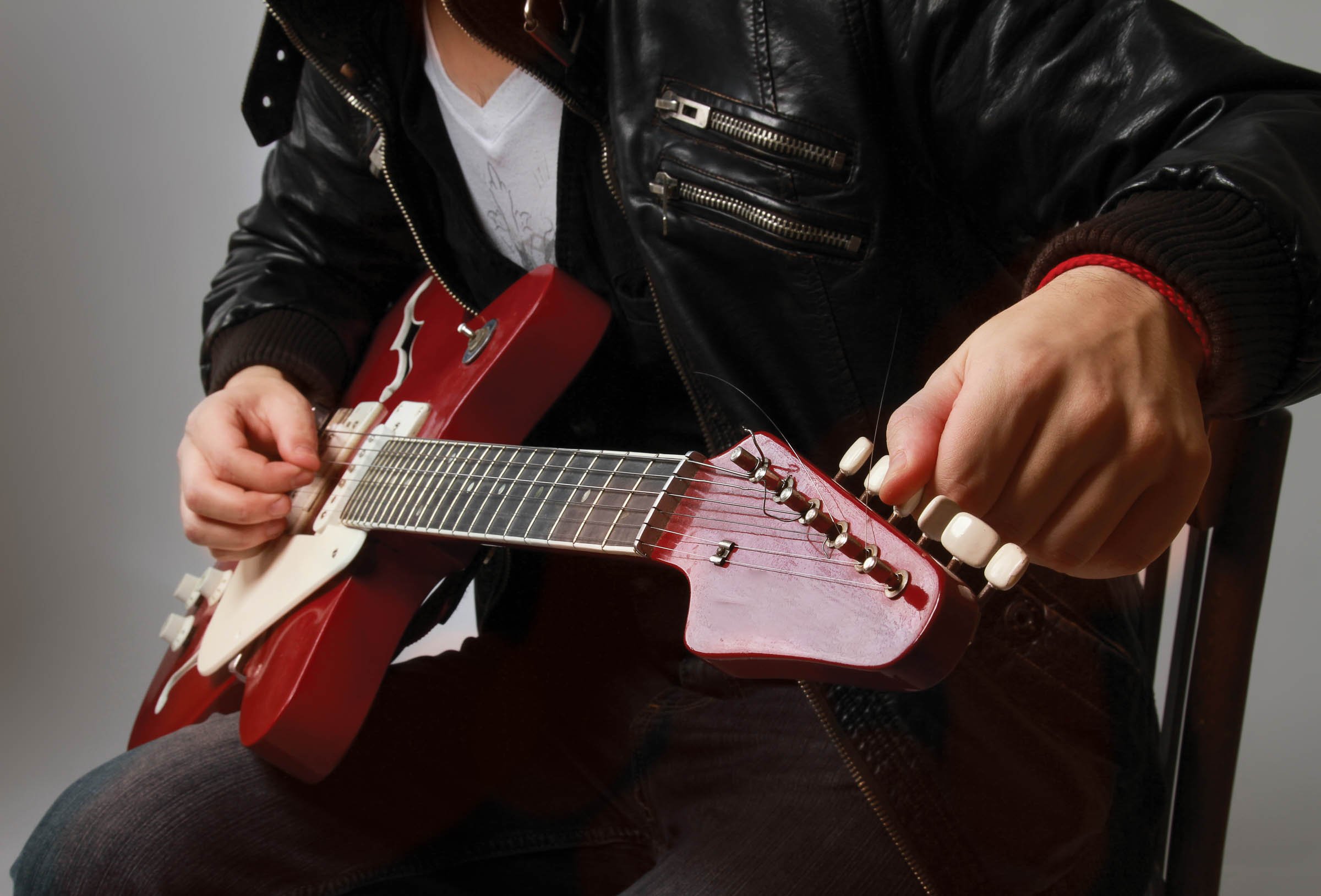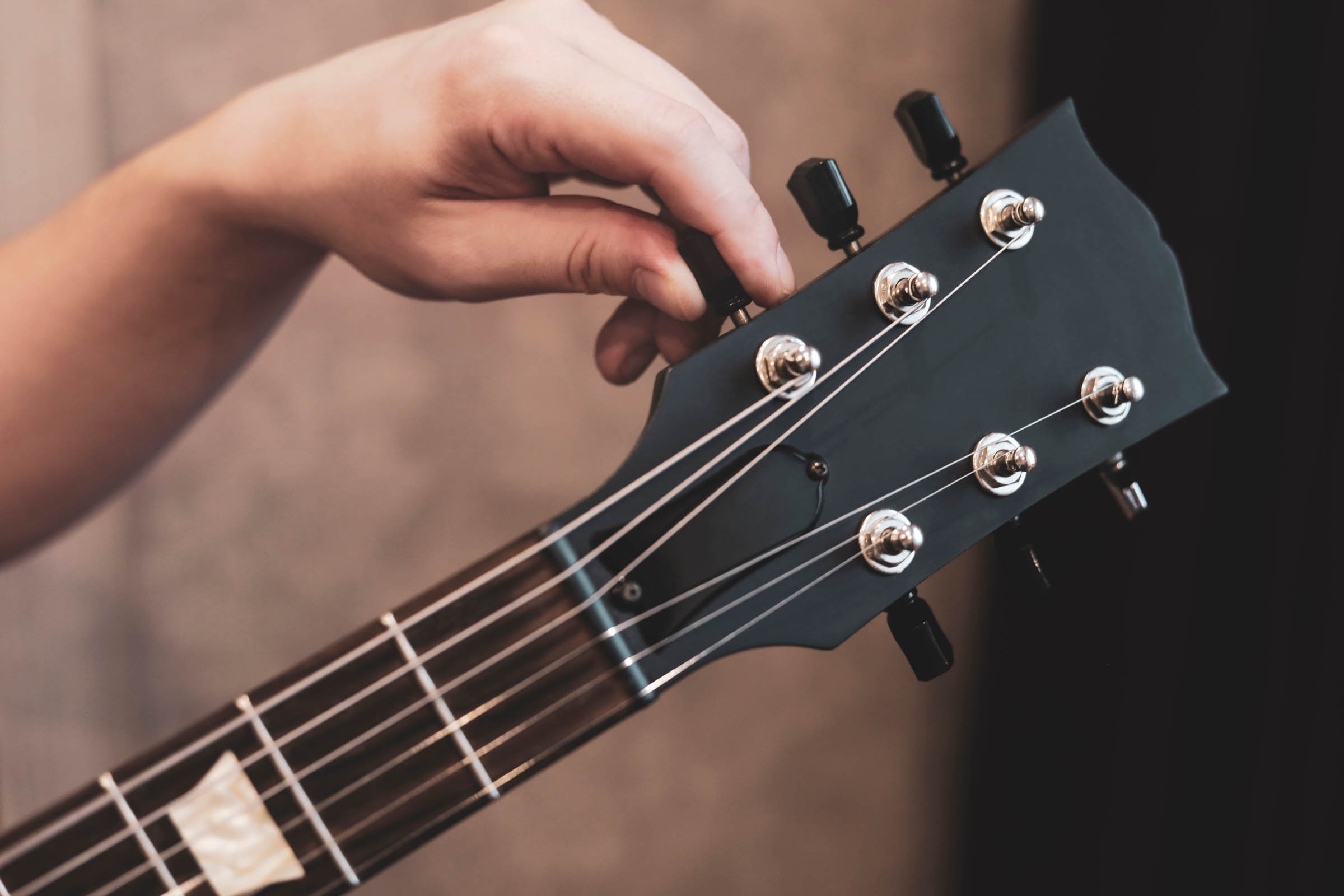How to tune a guitar? This is what you must know before you start
If you are wondering how to tune your guitar, you must first know the basics. Although every advanced musician knows them, some beginners may not.
There are six strings on the guitar. When it comes to the classic tuning, these are strings E, A, D, G, B and E. Guitar strings are arranged from thickest to thinnest.
Some beginners don't bother too much with tuning. They think they won't have to deal with it until after a few days or weeks of playing. But the truth is that you will tune your guitar quite often. With regular use and after an hour of playing even every day.
First and foremost, choose the guitar strings that are right for you. When you put new strings on your guitar, you will have to tune the strings on your guitar even while you are playing. Strings tend to detune and not sound good. But there is no need to worry. This is a completely normal phenomenon. After some time, they should “get adjusted” and stop causing problems.
You need to tune your guitar on a regular basis. You can't avoid it, so it's good to choose the way that suits you best.
How to tune the guitar using a tuner?
The first option for many musicians is the electric tuner. It is a small accessory with several functions. It is easy to control, and you can have it with you at all times. Since it does most of the work for you, it is great not only for busy musicians with no time to spare, but also for beginners. They usually do not yet know exactly how a tuned guitar should sound, which makes, for example, tuning by ear complicated.
How does a guitar tuner work? We'll explain the whole process in a few simple steps:
Turn on the tuner and place it near your guitar. The closer you are, the better.
When tuning, always start with the thickest or thinnest string. Strum it once and wait a moment.
The tuner has a smaller display where you should see two pieces of key information. The first is an indication of what tone you are playing. If you strum the thickest string, that should be the tone E. The second piece of information tells you how far you are from the target tone. This is shown by am arrow, which tilts to either the right or left side. You want it in the middle. If it's more to the left, your string is below the tone. You must therefore tighten it with a tuning pin. If the arrow is tilted to the right, it means that the tone is too high, and you have to loosen the string. In this case, you adjust the pin to loosen the string.
When the string is properly loosened or tightened, the hand on the tuner should move in the middle. Some tuners also have colour display. When the string is tuned correctly, it glows green.
Continue like this for every single string. Even though it sounds strenuous and difficult, there is no need to worry. The more you tune the strings, the faster you become.
To be sure, at the end move your fingers across each string one more time. Strum every one of them. When the tuner arrow is in the middle or the device is green, you can start playing.
Electric tuners have many advantages. They are easy to use and even a beginner can handle the tuning process. They are accurate and fast. You will have the tuning done within a few minutes after a certain period of use.
Every coin has two sides, and even this type of tuner has its downsides. The main one is that it may be pricey. Unlike tuning by ear, which is free, you have to invest in it. You also need to keep in mind that even though the device is small, you must carry it with you at all times.
How to choose a good guitar tuner?
Before we start other tuning methods, it's good to know how to choose a tuner. You will find different models on the market. Some are more expensive, others are cheaper. Devices are usually divided into four basic categories, namely:
standard tuner,
desktop tuner,
clip tuner,
floor tuner,

Standard tuner
The standard tuner is universal because it is suitable for all types of guitars. You will recognize it thanks to its square shape, similar to a box. It is easy to use because you just need to place it near the guitar and turn it on.
The tuner has a microphone that is used for sound analysis. Accordingly, it can determine whether the strings need to be loosened or, conversely, tightened. Most models also provide a cable connection input. This will make it easier for you to tune the electric guitar.
You can carry a classic tuner wherever you go. It is not too big. You can easily put it in a suitcase, bag or purse.
Desktop tuners
The second type is desktop tuners, which are characterized by larger dimensions. They have a folding stand located in the back. Thanks to it, the device does not fall during tuning.
Of course, there is a display, which shows you all the necessary information, and a microphone, which is used to check the condition of the strings. More expensive models have such a high-quality microphone that you can tune your guitar even in a noisy environment and the results are still accurate.
Some manufacturers have desktop and classic tuners in one category, others separate them. In general, however, they are identical devices with similar features.
Clip tuner
Clip tuners are a great solution for musicians on the road. They are small, compact, and you can put them in every bag or suitcase. They do not take up space and are easy to use. As the name implies, they have a clip thanks to which you attach them to a musical instrument.
The clip type tuner does not have a microphone, but can pick up the vibrations. Based on them, it evaluates whether the strings are in tune or not. However, noisy environment can be a problem. In such situations, they may not provide the most accurate results.
If you know that you will travel, but there will be noise in the destination, invest in a clip tuner. More expensive types are less sensitive to noise and some even have a microphone.
Floor tuners
Floor tuners are versatile, but more suitable for electric guitars and bass guitars. As they also have advanced features and are more expensive, they pay off, especially for professionals. They are known to provide perfect and accurate results. They also have a cable input and a microphone.
The display of floor tuners can be designed in various ways. However, since these are relatively expensive tools, you will usually encounter a LED type that glows in the dark. The screen is large, so it is easy to read all the information.
Additional parameters of tuners
When selecting tuners, also consider other parameters, such as material. The most commonly used is plastic, which is long-lasting and lightweight. But over time, it can break. Therefore, handle tuners carefully.
Besides the material, check whether the tuners are calibratable and chromatic. They should not miss these qualities. With them, the tools show the necessary tuning data, including all tones.
The selection can also be affected by the size of the display, its processing and whether it can glow in the dark. The larger the display, the clearer it is and the more information you will see on it. On the other hand, a screen that is too large enlarges the overall dimensions of the tuner. It makes it less practical and compact.
Of course, you must not forget functions, price, and preferred brand.

How to tune your guitar using a mobile app?
You already know how to tune a guitar with a tuner. Now you'll learn how to tune your guitar with a PC or mobile app.
You'll find several guitar tuning apps on Google Play, the App Store, and similar stores. Many of them are also available for free. Although they have limited functions and options, such an offer should be enough for beginners. If you don't want to download anything to your mobile phone, you can use Google to find an online tuner.
The way these online tools work is the same as electric tuners. Just place your device, mobile phone or computer in proximity to the guitar. When you turn on the guitar tuning app, you will see an arrow pointing to the left or right. Adjust the guitar strings according to the information on the phone display, and check one more time at the end.
Because the screen of the mobile phone and the computer is larger, tuning is easier for beginners. On the screen, you'll find more data that will help you. The disadvantage of this tuning method is that if the device does not have a good microphone, the results are skewed.
Expert's advice
Tuning by app or by computer is best if you have a classical or acoustic guitar. If you want to know how to tune an electric guitar, it is good to choose a tuner with the possibility of connecting via cable.
How to tune a guitar without a tuner?
There is a simple answer to the question of how to tune a guitar without a tuner. By ear. This method is mainly used by musicians with a lot of experience. But if you know how to do it, you can try it too. Take a guitar and start:
Even when tuning by ear, start with the thickest string. Based on it, you will be able to move on to the next ones. It's okay if there aren't any other musicians with tuned guitars around you, so you can hear the tones well. Rely only on your hearing.
Strum the string until you feel it is tuned. Brush over the string, tighten and loosen it.
When you are done with the thickest string, move on to the others. Each following string is five halftones different. Whenever you are uncertain whether the string is tuned correctly, go back to the previous one, which can help you.
Continue until you reach strings G and B. They are only four halftones apart. Therefore, they will sound a little different when tuning.
At the end, go through the strings again to make sure everything is fine.
The advantage of tuning by ear is that you don't need anything at all. All you need is a musical instrument and hearing. But the problem comes when you are a beginner who does not know the guitar well yet, or when you don't have enough experience since you have been using a tuner until now.

Choose the best option
There is more than one answer to the question of how to tune your guitar properly. There are several options. The easiest option is definitely an electric tuner, which will do almost all the work for you. But if you have more time to tune, or you want to get better at it, choose to tone by ear. Use our practical tips and tune your guitar easily and quickly without major difficulties and learn to play the guitar like a pro.
 Musical Instruments
Musical Instruments

 Water Sports
Water Sports


 Sport
Sport


 lv
lv




